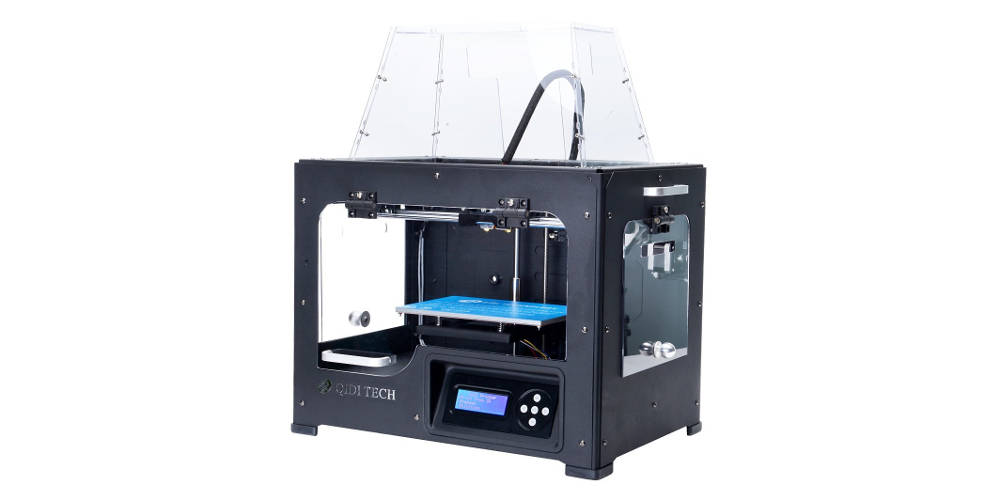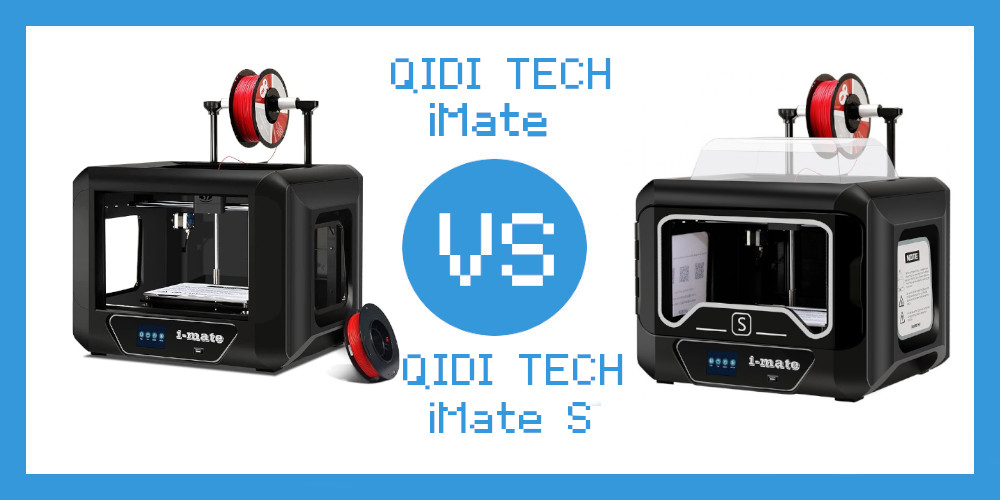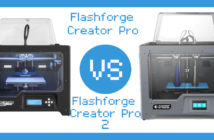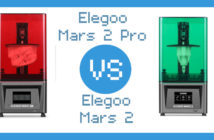FlashForge Creator Pro vs. Qidi TECH 1 Comparison
You’d be forgiven for thinking the Flashforge Creator Pro and Qidi TECH 1 were the same machine. In fact, they’re so similar that you could say they’re more clones of one another than the Makerbot they’re meant to imitate. That begs the question- what IS the difference between these two printers? Today’s FlashForge Creator Pro vs. Qidi TECH 1 review aims to clear the mystery and make your choice a little easier.
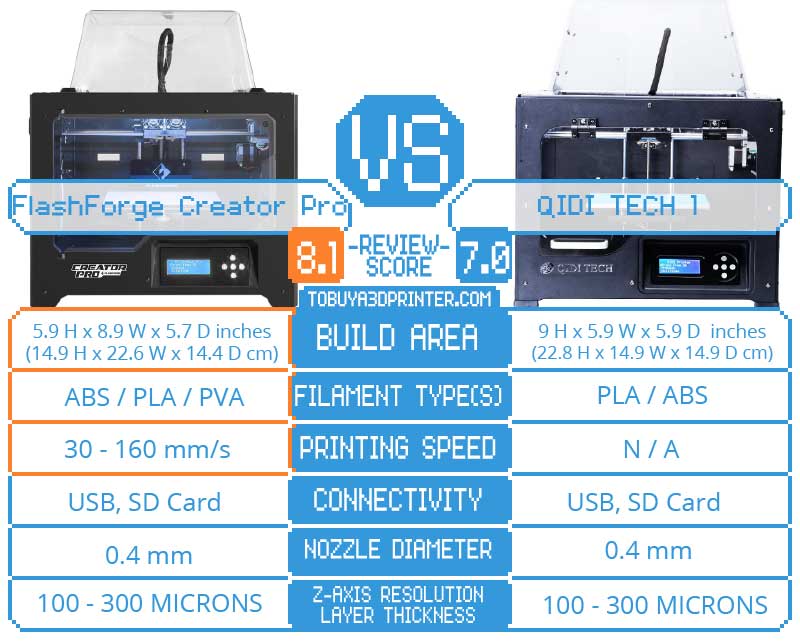
FlashForge Creator Pro Basics
Get ready for some deja vu. These two printers have remarkably similar specs in addition to looking nearly identical. The Creator Pro employs a cramped 8.8×5.7×5.9-inch build space on an aviation-grade heated aluminum print bed. Reliably printing at 100-300 microns, this printer comes with dual .4mm brass-nozzle extruders. The 18.7 x 13.1 x 15.1-inch frame is made of heavy, durable powder coated steel, and you can connect via tethered USB or SD card.
Qidi TECH 1 Basics
Following suit, the Qidi TECH 1 provides 9×5.9×5.9-inches of print space over a high-grade heated aluminum build plate. In addition to having a slightly larger build space, the Qidi frame is also slightly smaller, measuring 18.3×12.6×14.7-inches. It prints at resolutions between 100-300 microns (getting that deja vu yet?) using the same MK10 dual extruder as the FlashForge. Like its competitor, the Qidi TECH 1 allows USB or SD card connections, which should suffice for most users.
FlashForge Creator Pro vs. Qidi TECH 1 Comparison: Construction and Design
There’s a $200 elephant in the room. Despite looking identical, the TECH 1 is much less expensive than the Creator Pro, and it all comes down to construction. FlashForge boasts loudly about their all-steel frame, while Qidi quietly mentions their “metal” frame. We’re still unable to determine exactly what that metal is, and the company seems eager not to disclose. Whatever the TECH 1 is made of, at 42lbs it’s a full 5lbs heavier than the Creator Pro.
Both frames perform true to their claim of keeping the print area stable and secure. Both 3D printers feature enclosed built spaces, but the Qidi allows you to lift side doors. That’s a big difference that lets you air the chamber out for PLA, for example, or remove your print from a more advantageous angle. Curiously, FlashForge has given the Creator Pro a finicky 2” spool loader, meaning it only works with certain filament brands. This is an easy fix, but the Qidi’s 1” loader is more user friendly.
The Qidi wins out in convenience, but when you look under the hood, things change. The Qidi has a smaller motherboard and poorly seated connections that commonly cause problems. A little extra effort here would have saved hours of customer’s time and out of pocket expense.
FlashForge Creator Pro vs. Qidi TECH 1 Comparison: Support
Both FlashForge and Qidi are widely celebrated for their excellent customer support. From helping you troubleshoot to fixing their own rare mistakes, both companies are great to work with. Notably, the TECH 1 comes with a 6-month warranty, while the FlashForge comes with a meager 90-days with the option to purchase more protection. Both companies are happy to help answer questions or concerns for the lifetime of the printer.
One important factor of support, however, is access to replacement parts after the warranty or for your own upgrades. FlashForge has an HQ in the US and Europe, so sourcing parts is easier and cheaper than for the Chinese-based Qidi.
FlashForge Creator Pro vs. Qidi TECH 1 Comparison Verdict
This is a tough comparison, and neither printer pulls a clear win after careful scrutiny. These two 3D printers make items with a similar quality, share the same printing space and speeds, and provide a near identical user experience. The Qidi will save you a couple hundred bucks, which may or may not be worth the hassle of possibly needing to resolder the motherboard connections.
If saving a few bucks doesn’t mean much, the FlashForge is more dependable out of the box and comes with a more recognizable brand name. In the end, you can’t go wrong with either of these printers for their price points.

